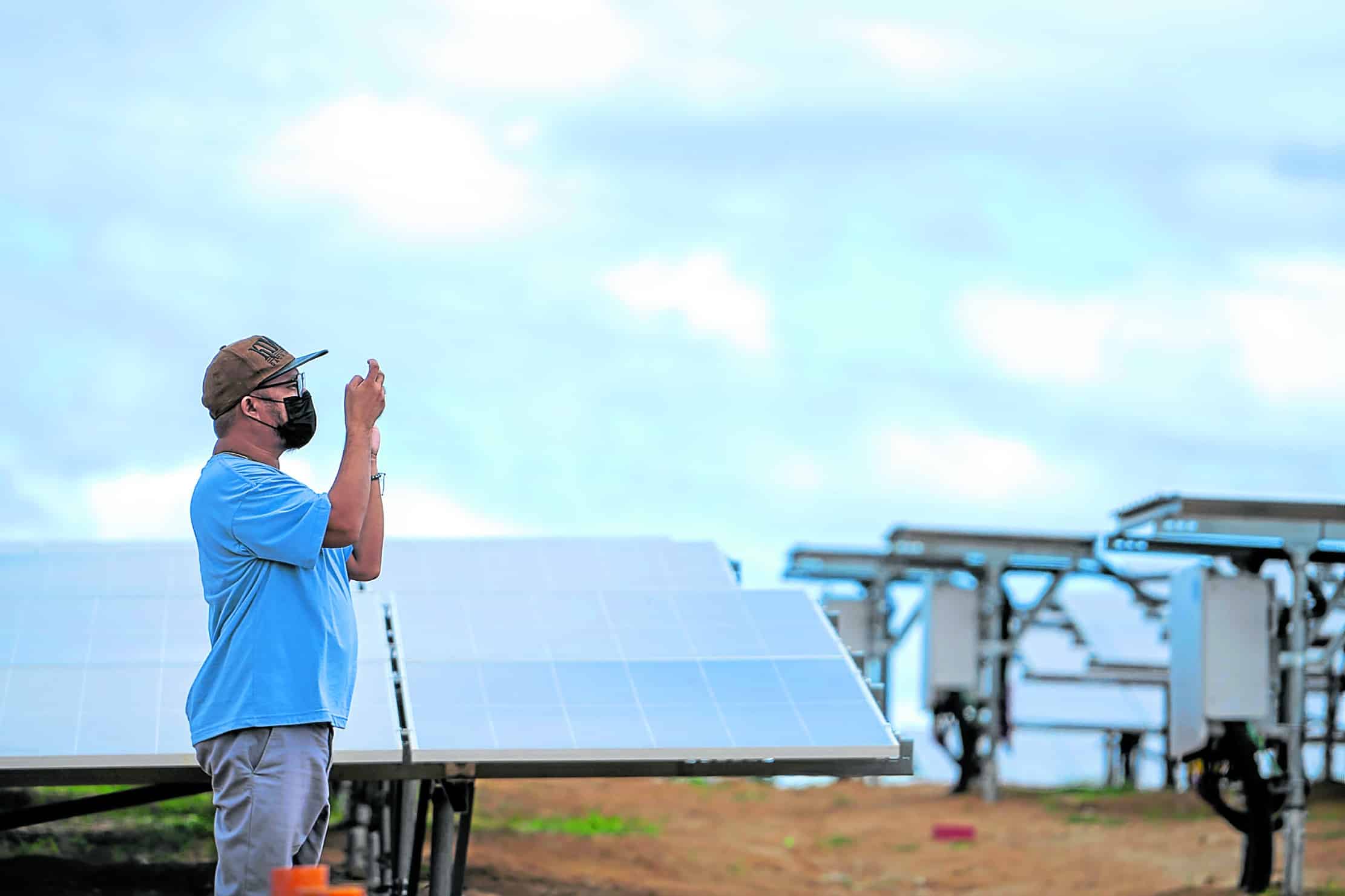
CHARGING PROGRESS The solar power facility sits on a 22-hectare property that straddles Barangays San Vicente and Santa Cruz, Dagohoy, about 73 kilometers from the provincial capital of Tagbilaran. —Contributed photo
TAGBILARAN CITY, BOHOL, Philippines — Bohol, which promotes itself as a prime eco-tourist destination in the country, has opened its first and largest solar power plant, which can help the province achieve a more stable power supply.
The 27-megawatt (MW) Dagohoy Solar Power Plant by PetroGreen Energy Corp. (PGEC) can provide renewable energy to about 15,000 households, or 77,400 individuals, said PGEC in a statement.
Inaugurated 0n Nov. 21, the facility sits on a 22-hectare property that straddles Barangays San Vicente and Santa Cruz, Dagohoy, about 73 kilometers from the provincial capital of Tagbilaran.
READ: World’s biggest solar farm to get budget boost
The 22-hectare solar site hosts 1,270 solar tables consisting of 40,628 units of Trina Solar-brand panels producing 41,000 megawatt-hour of power annually. It will be connected to the National Grid Corp. of the Philippines’ (NGCP) 69-kilovolt Bohol transmission line to deliver power to the province.
Key priority
Among those who attended the switch-on ceremony were Bohol Gov. Erico Aristotle Aumentado; his wife, Rep. Vanessa Cadorna-Aumentado of Bohol’s second district; PGEC vice president and chief operating officer Francisco Delfin Jr.; Dagohoy Mayor Hermie Relampagos; Energy Undersecretary Rowena Cristina Guevara; and officials of Taisei Construction Company and the NGCP.
Aumentado gave the assurance that only idle lands were selected for the solar farms. Rice farms were not included, he said, as the province is among the country’s rice producers.
“We consider power generation a key priority under the strategic change agenda of the provincial government. In order to foster growth and attract investments, Bohol needs reliable and eco-friendly sources of power that can drive our local economy forward and contribute to building a cleaner, greener future, “ the governor said.
High-growth area
The Dagohoy Solar Power Project is the company’s second solar power investment after its 25 MW Bugallon solar project in Pangasinan. Both sites were selected for being among the “high growth areas” in the country that need additional power supply.
Bohol gets its power from Leyte province through a submarine cable.
When Bohol was ravaged by a magnitude 7.2 earthquake in October 2013 and Super Typhoons Yolanda (international name: Haiyan) in November 2013 and Odette (Rai) in December 2021, the province was plunged into darkness. Odette toppled transmission towers that connected Bohol to the main Visayas grid, resulting in a monthlong, province-wide power outage.
The Bohol-Leyte line is fully loaded at 80MW with electricity from Leyte and Bohol. If the transmission line tripped, more than 80 percent of Bohol would experience power outrage. Since Leyte’s power supply is already congested, Aumentado said Bohol can no longer ask for more from the Eastern Visayas province.
Cadorna-Aumentado, for her part, said PGEC’s project is aligned with the province’s vision of a “Green Bohol,” where progress and environmental sustainability go hand in hand.
Guevara shared the same sentiment, disclosing that the Department of Energy (DOE) has awarded over 1,400 service contracts for a total of 1,500 MW of renewable energy.
“Today, with the Dagohoy Solar Power Plant, Bohol is 20MV closer to achieving energy security and energy sustainability,” Guevara. said
The DOE is targeting 35-percent renewable energy in the country’s generation mix by 2030 and 50 percent by 2040, a critical step for the Philippines to meet its energy demands while also positioning the country as an active participant in global climate action.